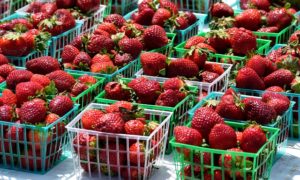 The product is considered unsuitable for use when it loses organoleptic, physicochemical properties and nutritional value. Sometimes after the expiration of the actual shelf life, some products retain an acceptable appearance and do not change the taste.
The product is considered unsuitable for use when it loses organoleptic, physicochemical properties and nutritional value. Sometimes after the expiration of the actual shelf life, some products retain an acceptable appearance and do not change the taste.
It should be remembered that any product is a whole colony of microorganisms. Consequently, after the expiration date, processes that are not visible from the outside begin to pass, but your body will immediately feel it.
Hence one can’t underestimate the importance of food packaging and further storage of products.
Food Shelf Life
Storage at low temperatures allows extending products shelf life. Surely, almost everyone met the shops, where cakes, cakes, and other confectionery products, imported from far abroad, are sold. They are stored in a frozen form, and at the same time remain beautiful, tasty and not harmful from the health perspective.
Perishable products include certain groups of cheeses that can be stored for no more than 5 days. This does not apply to natural cheeses. For example, to those that mature about a year and a half. Such a product can be stored for a very long time if certain conditions are observed. Brewed milk refers to “fast pores”. Shelf life – maximum 10 days.
Also, they include some types of products based on milk mixtures, sausages in hermetically sealed packaging. Shelf life is no more than 10-12 days.
The “long-term” includes groceries, granules, canned goods, caramel, some kinds of sweets and vegetables, or, for example, potatoes, beets, onions if stored at the right temperature under the right conditions. Non-perishable people include food products, which are stored for more than a month.
Depending on which category the goods belong to, they determine the methods for marking the expiration date. For particularly perishable, you need to specify not only the day and month of production but also the exact time. Shelf life and methods of storage should also be indicated on the packaging.
If these are disposable packages, the dates indicate special stickers glued to the package. Perishable products indicate the day and month of manufacture. On non-perishable only year and month.
Food Processing and Packaging
A significant role for the shelf life is played by packaging. And as in the packaging of goods, and in storage after the opening. It is common knowledge that in plastic bags the shelf life of products decreases. At the same time, if you use foil, wrapping paper, containers of food plastic, then you can store the product much longer.
The next factor is the way of processing. It can be physical and chemical. In the first case, we are talking about processes such as drying, smoking, temperature effects. The same applies to the physical processing of boning, removal of bones, feathers, straining, sifting, drying. In other words, in the course of such processing, the physical properties of food products change.
To the chemical treatment are the processes associated with the increase in the shelf life with the help of mycobacteria. To this treatment include pickling, leaven, fermentation, pickling.
There are different technologies for packaging products, which increases shelf life. One of the most popular is the technology of vacuum packaging. It isolates food from the influence of external factors, but at the same time, it allows it to “breathe”.
The negative side of evacuation is the deformation of the contents. To avoid this and some other negative effects, create a gas-modified environment.
The correctly selected mixture of gases allows to improve the positive sides and neutralize negative ones. Thanks to this technology, for example, red meat can remain attractive externally and pleasantly tastes much longer. It allows longer to store hermetically packed fruits, cuts, fish and much more.
Another common technology is aseptic packaging. It reduces the level of seeding. The content is thermally treated and then placed in a pre-sterile package. Insemination is called the presence of harmful microorganisms in the product.
GOST defines their borderline allowable quantities. Exceeding this standard is considered a violation. To reduce the level of contamination to an acceptable value, the product is treated at a temperature of 60 degrees for 15 minutes.
Thank you for reading our articles, stay informed about the industrial world and Exapro by following us on Exapro Hub, Facebook, Twitter, and LinkedIn.



